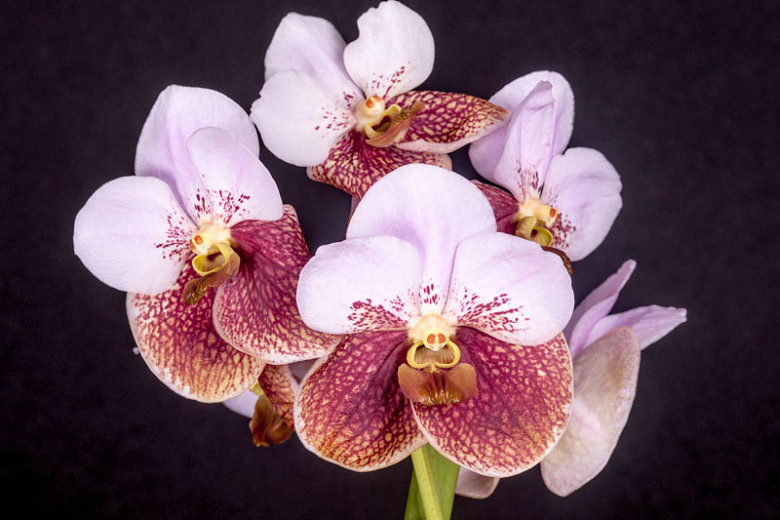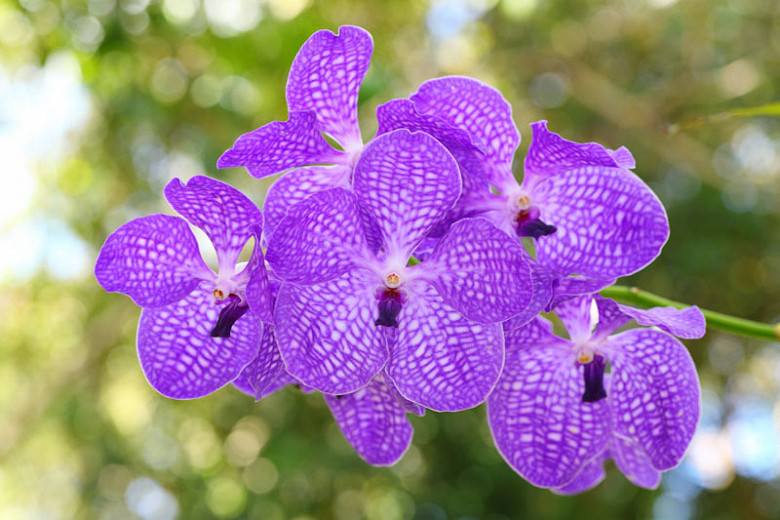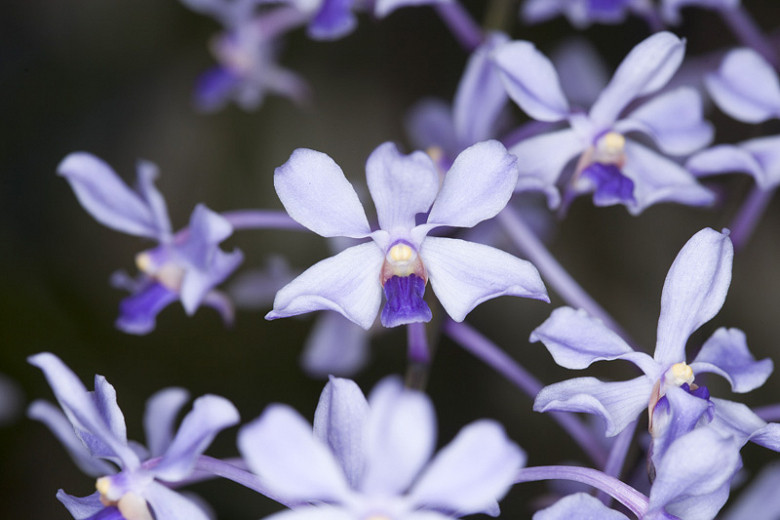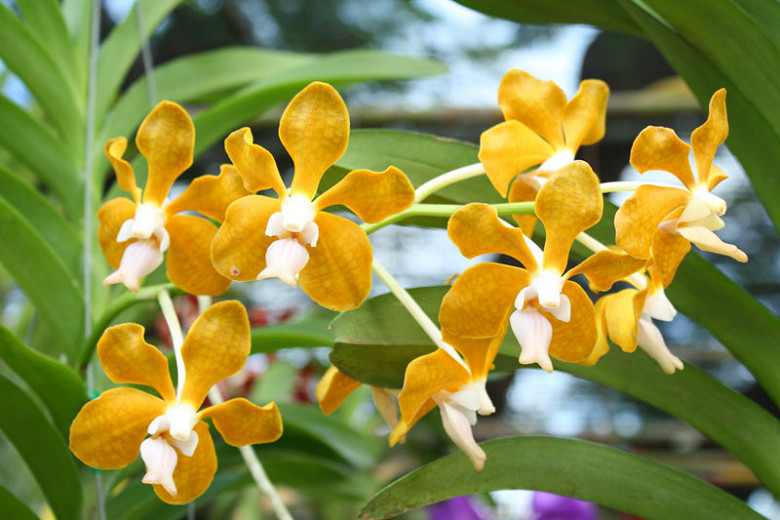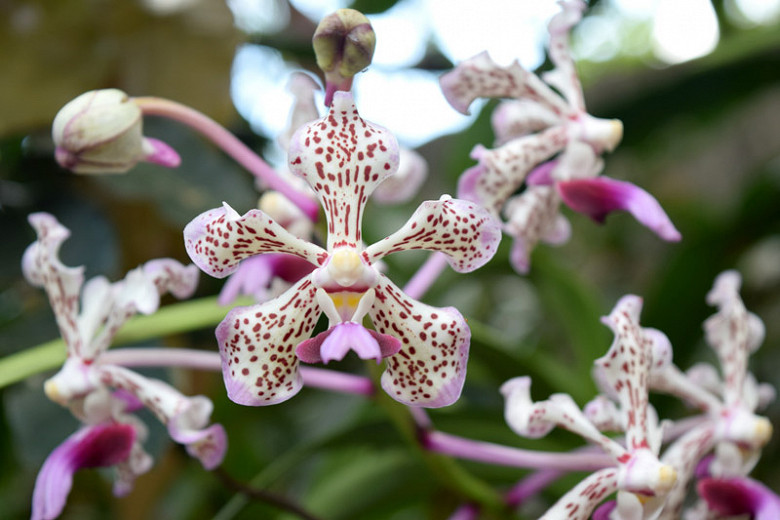Vanda sanderiana (Waling-Waling)
Vanda sanderiana (Waling-Waling) is a large sized epiphytic orchid species boasting stout, erect or ascending inflorescences giving rise to 4-10 large, long-lasting, fragrant flowers. Blooming mostly in the fall, the blossoms, 3.5-4.5 in. wide (9-11 cm), feature broadly elliptic, dorsal sepals and petals in a delicate rose color with brown spots towards their base. The lateral sepals are tawny-yellow, flushed and veined with red-blown. The rather small, fleshy lip is usually a dull tawny-yellow streaked with red on the inner side. The closely arranged, evergreen leaves, up to 12-16 in. long (30-40 cm), are leathery, curved, strap-shaped, with unequally notched tips. The oldest leaves are deciduous after several years. Native to the island of Mindanao, Vanda sanderiana is a hot growing orchid species found on tree trunks in woodland at low elevations, usually below 1650 ft. (500 m). This species has been over-collected and is considered rare in nature. However, plants are available from the many improved, line-bred strains in cultivation.
- Grows up to 44 in. tall (100 cm) and 24-31 in. wide (60-80 cm).
- Grows best in very bright light, but direct sunlight should be avoided. Strong air movement should be provided at all times.
- Optimum temperatures throughout the year are 69-71°F (21-22°C) at night, and 84-88°F (29-31°C) during the day.
- Maintain adequate humidity (80-85%) year-round by setting the plant on a tray of gravel, partially filled with water, so that the pot never sits in water.
- Water every day, preferably in the morning. The plant should be kept moist with only slight drying allowed between waterings. Water may be reduced slightly in winter.
- During active growth, fertilize every week with 1/4-1/2 of the recommended dose of fertilizer for orchids.
- Propagate by division when the plant overflows the pot.
- Once the flowers have faded, remove the spent flower spikes.
- Potting is necessary when the rhizome of the plant protrudes over the edge of the pot or the potting medium starts to break down. This should be done in the spring. Use a coarse medium, whether fir bar, tree fern or charcoal, and work it around the roots. Keep shaded, humid, but drier at the roots until new root tips grow. Do not overpot.
- Generally disease free. Keep an eye out for aphids, glasshouse red spider mite and mealybugs.
- Native to the island of Mindanao.
Tip for reblooming
- Vanda orchids should bloom at least once a year. If your orchid does not flower, move it to a location where it will receive more light and sun. This may resolve the problem.
Requirements
| Hardiness | 12 – 13 |
|---|---|
| Plant Type | Orchids |
| Plant Family | Vanda – Orchids |
| Exposure | Partial Sun |
| Season of Interest | Summer (Mid,Late)FallWinter |
| Height | 3' – 4' (90cm – 120cm) |
| Spread | 2' – 3' (60cm – 90cm) |
| Water Needs | Average |
| Maintenance | Average |
| Soil Drainage | Well-Drained |
| Characteristics | Fragrant, Showy, Evergreen |
| Garden Uses | Patio and Containers |
